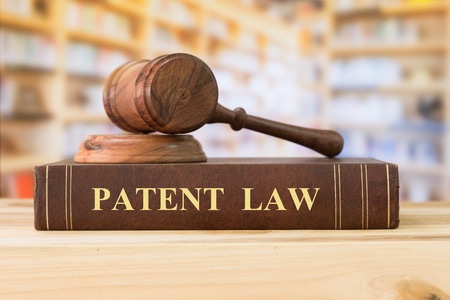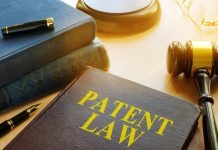This article is written by Bhumika Dandona from the School of Law, Sushant University (erstwhile Ansal University), Gurgaon. In this article, she gives an overview of some of the most important patent decisions given by the courts all over the world in the first half of 2020 and their impact on future cases.
Table of Contents
Introduction
Indeed, 2020 has been the most eventful one in the twenty-first century so far. We can attribute it to the advent of the novel coronavirus at the beginning of the year. The deadly disease forced people to make a change in the ways of leading their lives. There was no business in the world that did not have an impact on itself. This catastrophe embraced the judicial systems across many countries as well. But before the planet went into a state of restricted ‘physical’ activities and movements and even during its course, courts from several nations delivered some of the most significant verdicts regarding patents. This article seeks to give an overview of such decisions and their impact on future cases.
Samsung Electronics America Inc. v. Prisua Engineering Corp.
Facts of the case
- In this case, the appellant, Samsung Electronics America Inc., appealed to the United States Court of Appeals for the Federal Circuit. In the appeal, it had stated that it had previously moved the Patent Trial and Appeal Board in an inter partes review (IPR) proceeding. The South Korean technological company was against the claims put forward by the U.S. Patent No. 8,650,591, in possession of Prisua Engineering Corp. Also known as the ‘591 patent’, the appellant had contended that it could not be subject to the process of patenting.
- The Board, however, even after reviewing the same and coming to a conclusion that such claims were indefinite, decided against cancelling them. Thus, the appellant took the matter to the Federal Circuit.
Decision of the court
- The court found out that a party could not request the Board to cancel the claims on the grounds of them being indefinite. Under Section 311 of the U.S. Patents Act (35 USC), indefiniteness had no mention as a ground for declaring a patent invalid during an IPR proceeding. The appeal was, as a result, dismissed. It was a kind of breakthrough decision, in the sense that where the hereafter cases involve similar circumstances, neither party can plead for a remedy based on the indefiniteness of a particular patent.
Bristol Myers Squibb Holdings Ireland Unlimited Company and others v. Natco Pharma. (CS)(COMM)
Facts of the case
- In June 2019, the defendant had filed a suit under Section 34 of the Specific Relief Act, 1963, in the City Civil Court. Contending against the plaintiff, the defendant asserted that a medicine named APIXABAN, covered under the patent (IN243917 – senior patent) belonging to the plaintiff, in actuality did not have any claims within the registered patent. In this way, it became a part of the public domain, and therefore, the defendant had the entitlement to use the pharmaceutical product. It further appealed to the Court to prevent the plaintiff from making any interference in this matter.
- The plaintiff and its sister companies had later filed a lawsuit in Delhi next month. They claimed that the defendant had infringed their junior patent, which also had under its purview APIXABAN. It had a validity of up to 17th September, 2022. The plaintiffs further stated that the defendant also violated their senior patent, which covered the medicine generically. Thus, business in the medication involved caused a violation of their patents, and they had the right to sue the defendant.
- In response to it, the defendant appealed in the Delhi suit under Section 10 of the Code of Civil Procedure, 1908, requesting a stay on the grounds of there being pendency of a previously instituted proceeding in the Hyderabad suit. Both the lawsuits had the same issue, but the Delhi one ought to be subject to delay, being filed after the one in Hyderabad. The plaintiffs, disagreeing with the same, asserted that the matters were different since the defendant’s suit talked about the senior patent, while the plaintiffs referred to the junior patent. Moreover, they contended that the defendants wanted to seek a proclamation of non-violation under Section 105 and groundless threats under Section 106 of the Patents Act, 1970.
Decision of the court
- The Court, in its judgment, observed that the patent-related affairs were subject to the governance of the Patents Act, as opposed to the SRA. It thus held that the defendant could not seek a declaration of non-infringement under the latter enactment. The Court stated that Section 34 could not be exercised indiscretion with Section 105 and 106. Further, it also dismissed the defendant’s application under CPC. The decision of the Court herein is significant. It says that the issues concerning patents will have regulation under the Patents Act and no other legislation.
CDE Asia Limited v. Jaideep Shekhar & Anr.
Facts of the case
- The plaintiff had invented a new method for categorizing various wet equipment materials in 2013, as required by the material and mineral industry. It applied for acquiring a patent for its product named ‘System/Device Process for Classification of Various Materials’ under the Patents Act, 1970. The concerned authority granted the patent (no.307249) to the plaintiff for its product for the next twenty years.
- Later, in 2018, the plaintiff came to know that the defendants were selling, manufacturing and using such products that violated the previously mentioned patent. Subsequently, it filed a suit in the Delhi High Court, praying for an injunction order against the same. In response to it, the defendants filed an appeal stating that such a claim was not maintainable since they had filed a post-grant opposition under Section 25 of the Patents Act.
Decision of the court
- The Honourable High Court delivered its judgment while referring to Alloy’s Wobben case. It stated that the Supreme Court, in this case, concluded that there could be possibly no infringement suit during the pendency of post-grant opposition proceedings under Section 25, or within a year of the grant of patent. However, the apex court did not throw light on whether a lawsuit for infringement within one year of bestowing the patent would not be maintainable or not.
- Thus, the High Court held that since there was a violation of the plaintiff’s right under Section 48, there was no requirement for it to wait for the stated period to take action. Accordingly, the defendants’ application was rejected.
Thryv Inc. v. Click-to-Call Technologies, LP
Facts of the case
- Click-to-Call Technologies, the defendant in this case, had applied for obtaining a technological patent in 2011, and the authorities granted it the same. The appellant, then known as Dex Media, had owned this particular patent in the past. The defendant charged a suit against the appellant in 2012, stating that it had infringed the defendant’s patent. In response to it, the appellant appealed to the PTAB for an IPR proceeding to challenge the claims under the patent in question. The PTAB permitted the appeal so made, and later, the defendant assailed the proceeding. It contended that Title 35 U.S.C § 315(b) could obstruct the review proceeding if appealed for after one year of filing the suit for infringement of a patent. The PTAB dismissed the defendant’s plea and decided in favour of the appellant. It is to be noted that the appellant had changed its name to Thryv, Inc. back in 2019.
- The defendant then appealed against the decision of the PTAB to the Federal Circuit. The Circuit rejected the defendant’s application, stating that the Circuit had a lack of jurisdiction over the matter. It agreed with the appellant herein, who had intervened on the ground that 35 U.S.C. § 314(d) allows appeal of the PTAB’s decision to set in motion a review proceeding upon finding that § 315(b)’s time bar did not apply. Later, the defendant requested an en banc hearing which the Circuit granted. It stated that the Legislative branch of the United States of America did not restrict the judicial review of inter partes review proceedings.
Decision of the court
- Thus, the circuit evacuated its previous judgment and remanded the PTAB to dissolve the review proceedings. This prompted the appellant to further appeal to the Supreme Court of America to assess the case. The Court upheld that courts cannot take over the matters about regulations governing time limits for questioning patents. It asserted that the Legislature had deliberated the courts to stay out of the cases involving decisions of when to start review proceedings.
- This judgment is crucial because it lets the PTAB avoid the limits placed on it legally in patent confrontations. It also implies that it will be difficult to challenge the administrative actions for the same.
MTG Co. Ltd. v. Five Stars Co. Ltd.
Facts of the case
- The plaintiff is a beauty company that originated in the city of Nagoya, Japan. It filed a lawsuit against the defendant in the lower court of Osaka. It had alleged in the suit that the Osaka-based business establishment violated the patents – Nos. 5356625 and 5847904 – for the facial rollers invented by the plaintiff.
- After hearing the respective parties, the court decided that the plaintiff was legally correct in its stance and ordered the defendant to compensate the former by paying damages of one million USD. Consequently, the defendant then appealed to the Grand Panel for the Intellectual Property High Court of Japan.
Decision of the court
- The Panel upheld the verdict given by the lower court. Apart from that, it also increased the damages amount to four million USD. Here, what is significant to note is that although both the courts came to these calculations based on the provisions of the Japan Patent’s Act, 1959, they had used different approaches in doing so. As per the Act, the courts must decide the damages amount by multiplying the number of sold, breaching products by the price of breached products.
- While the lower court computed the ratio of the breaching products, the Panel used a different method. The latter multiplied the total cost of the breached product by the number of breaching products sold. In this way, the lower court ended up with a relatively small amount, whereas the IP High Court came up with a higher amount, stating that the defendant should fully compensate the plaintiff. It further asserted that the lower court’s formula had no basis in its support.
- This decision of the High Court is a precedent that gives hope to the patent holders of Japan. Many of them now believe that they will receive a complete counterbalance against any infringement of their patents.
Conclusion
People spent most of the year gone by in their homes. However, it certainly did not stop them from carrying on their profession. While in-person court sessions were not possible at these times, judicial bodies from all across the world made good use of online platforms. Judgements delivered over computers are not only going to have an impact on future cases, just as a regular judgment. They also give way to a new way of adjudication, that is, over the electronic medium.
Other than that, these patent verdicts are a turning point for all the laws governing this intellectual property right, both nationally and internationally. These decisions put forward different ways of interpreting the provisions and analysing similar cases. Thus, the above-specified verdicts are some of the most crucial ones that the judicial authorities will probably rely on to decide the ensuing disputes.
References
- https://www.mondaq.com/unitedstates/patent/956510/samsung-v-prisua-engineering-corp-indefiniteness-rulings-off-limits-for-the-patent-trial-and-appeal-board
- https://indiankanoon.org/doc/95223394/
- https://www.faegredrinker.com/en/insights/publications/2020/4/supreme-court-decides-thryv-inc-v-click-to-call-technologies–lp
- http://www.cafc.uscourts.gov/sites/default/files/opinions-orders/19-1262.Opinion.4-9-2020_1566865.pdf
- https://www.kawaguti.gr.jp/newsletter/newsflash/2003.html
- https://www.lexology.com/library/detail.aspx?g=451631ee-760f-4bea-8ceb-e0ad037392ab
LawSikho has created a telegram group for exchanging legal knowledge, referrals and various opportunities. You can click on this link and join:
 Serato DJ Crack 2025Serato DJ PRO Crack
Serato DJ Crack 2025Serato DJ PRO Crack










 Allow notifications
Allow notifications



